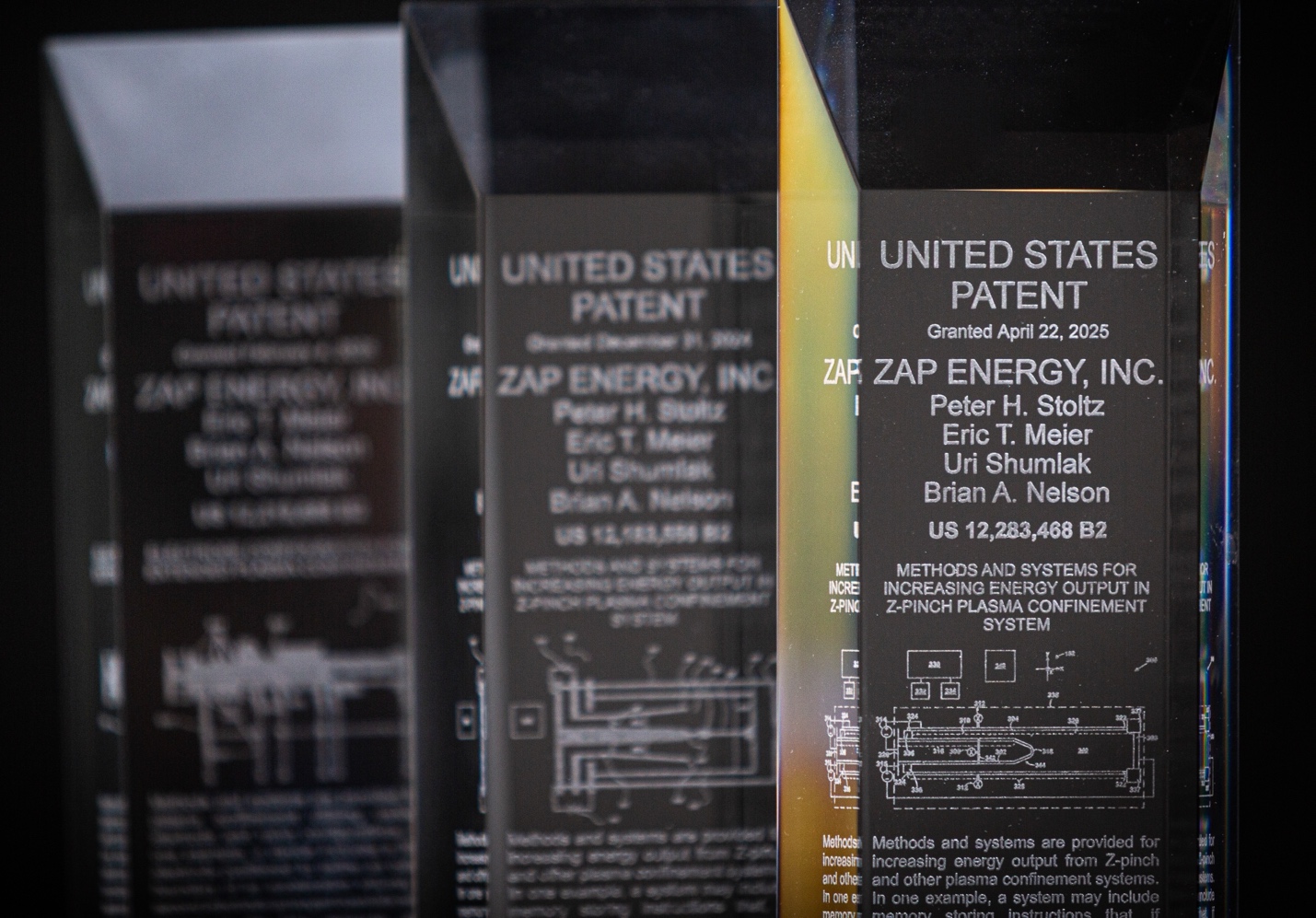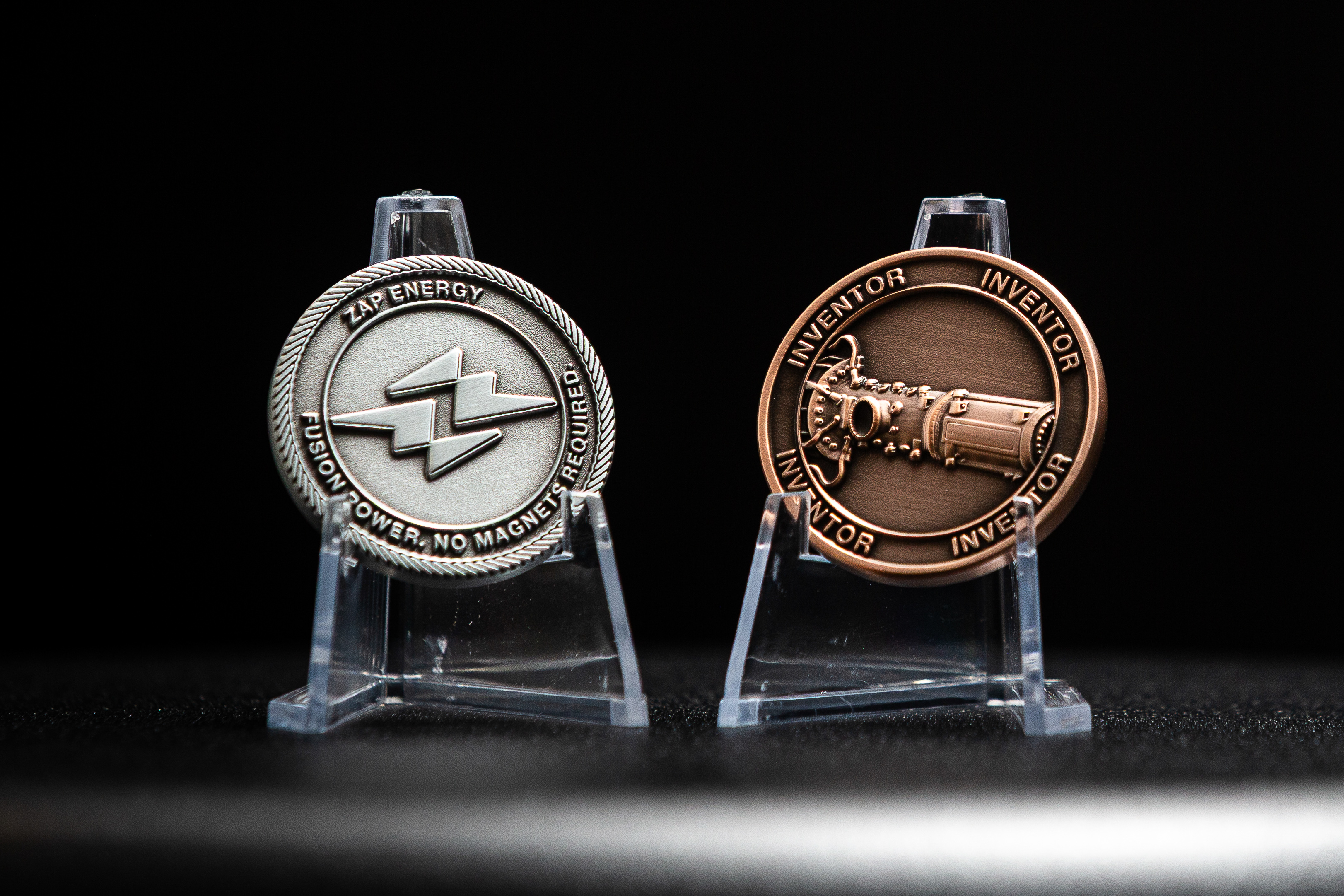Asmita Chande leads Zap's IP protection strategy while promoting innovation every day.
On any given day at Zap, team members are charting new science territory, driving to record plasma performance, or demonstrating technologies to enable the first fusion power plants.
But generating great ideas is a different task than protecting them. Ask a scientist or engineer what they think about intellectual property, and they're likely to describe bureaucratic purgatory: endless forms, legal reviews that stretch into oblivion, and policies designed to smother creativity.
Zap’s Head of IP Asmita Chande has nearly two decades of experience in global IP strategy development and patent prosecution. Most recently, she spent five years at Boeing managing a complex global patent portfolio. That background meant she was acutely aware of the risks of an overly defensive mentality.
“A company's IP culture really matters,” says Asmita Chande, Head of IP at Zap Energy.
“It can either spark well-protected innovation, or lead to a graveyard of valuable ideas.”

Navigating the middle ground
Zap's leading position in Z-pinch fusion IP began in 1998, with patents granted to Co-Founders Uri Shumlak and Brian Nelson at the University of Washington, now exclusively licensed to Zap. Many more have been granted to Zap since its founding in 2017.
At Zap, Chande manages both defensive patent filings that protect core operations and offensive patents that have broader applicability and can add value via partnerships and licensing opportunities across broader markets.
At the same time, she also works to help guide Zap’s peer-reviewed scientific publications. These publications detail Zap’s advancements in plasma physics and fusion engineering, allowing the fusion community to review and validate technical progress. Patenting that IP before it’s the subject of publication helps protect it, while also reinforcing its legitimacy.

Head of Theory and Modeling Eric Meier (a patent-holder himself) is bullish on the value of publishing to build scientific credibility, help attract top talent, and open doors to industry collaborations.
"You have to communicate – the best scientists want to be part of a company where they can publish,” says Meier. “So, you always have to be on guard about revealing anything that we want to protect. It’s a balancing act, but it’s worth doing.”

Broadening the inventor base
Zap’s IP Committee tracks inventions, from initial disclosure through prosecution, carefully deciding what to patent, while maintaining both trade secret and patent portfolios. Some inventions are better shielded as trade secrets, and Zap maintains a robust pipeline of documented innovations that aren't publicly visible as patents.
“We're not filing applications just to rack up numbers,” Chande says. “Every patent we’re granted is a valuable tool that can serve our long-term business objectives. Every dollar we save on filing a patent is a dollar we can invest in another innovation."
One of Chande's favorite initiatives was rethinking Zap’s invention disclosure process. The original approach, designed to give patent attorneys every detail needed to draft a patent application, was so onerous that it discouraged submissions. An electrical and computer science engineer by training, she worked with Zap’s IP Committee to strip it down to lower the bar for entry. She also added incentives for each disclosure: team members’ first invention disclosure earns them a bronze medallion emblazoned with a Zap fusion device. Subsequent submissions can earn silver and gold.
"The people at Zap are brilliant," she says. "When someone comes to me with an idea that they're excited about, my job is to help them protect it without slowing them down.”

Ideas that last
The new process is easier to navigate while still enabling systematic evaluation of inventions and alignment with business objectives. After finding the initial process daunting, Research Engineer Nathan Tripp has submitted three invention disclosures in the past year.
“Zap makes it easy to take credit for your work,” says Tripp. “And it’s exciting to imagine that many of these ideas could prove to be important for commercializing fusion.”
Even with streamlined processes, Chande concedes that good IP protection still requires a lot of paperwork. But she's seen how the right approach can make a big impact. Competitive advantages only hold their value if they’re quickly and thoroughly protected, and any number of these inventions might change the trajectory of fusion energy down the road.
"At the end of the day, getting a formally granted patent means you’ve created something deemed novel through truly rigorous examination,” Chande says. “It’s a tremendous honor. It means you've contributed something that will stick around."

.jpg)